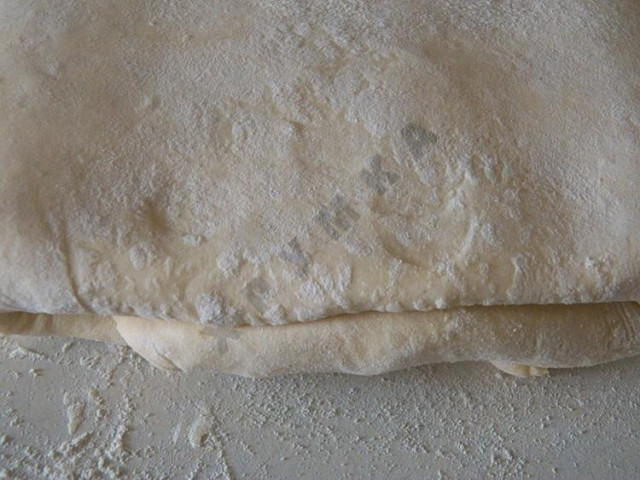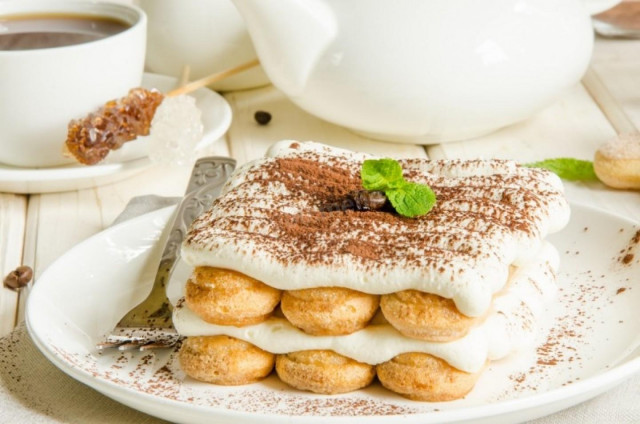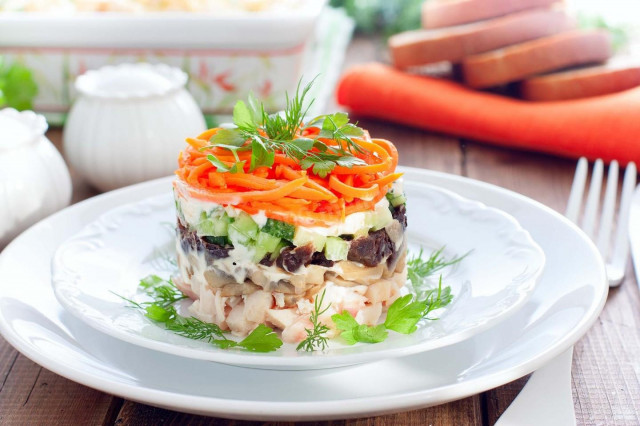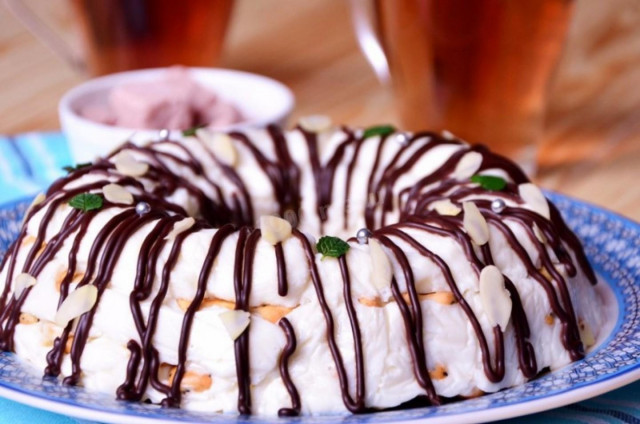Composition / ingredients
Step-by-step cooking
Step 1:
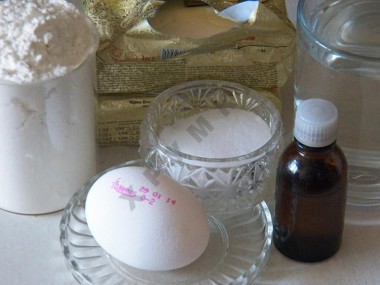
Ingredients
Step 2:
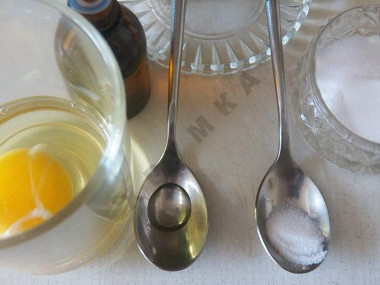
Egg, 16 drops of citric acid, salt
Step 3:
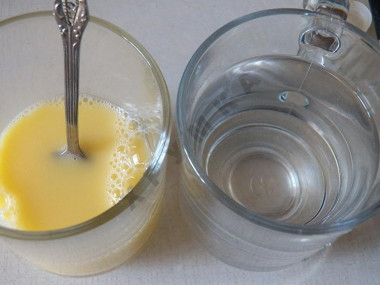
Pour the egg into a tea glass, beat lightly, add salt and acid, mix well until the salt dissolves,
Step 4:
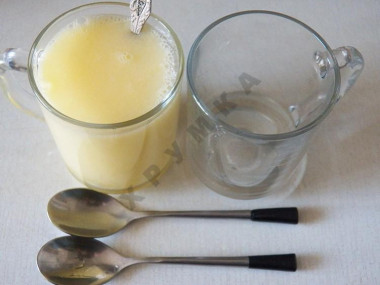
Then pour cold water to the egg to the edge of the glass
Step 5:
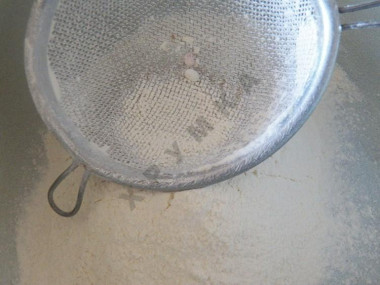
Sift the flour into a bowl.
Step 6:
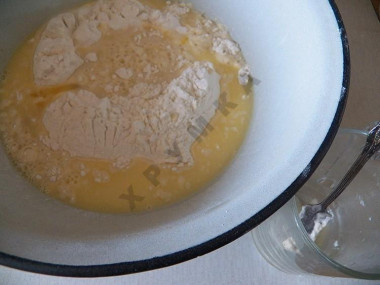
. Add a glass of water with an egg to the flour. Use a wooden spatula or a hand to knead the dough until a homogeneous, dense consistency is obtained. If the flour absorbs a lot of water, add more water to the dough; if the dough turns out to be liquid, add flour.
Step 7:
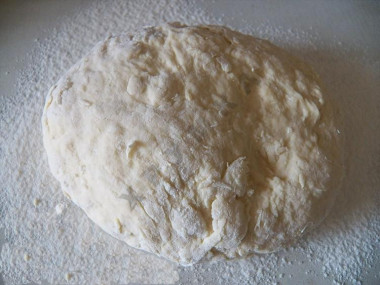
Knead the dough for 5-8 minutes, until it becomes well separated from the hands and the bowl, then put it on a floured table, cover with a napkin and leave for 20-30 minutes.
Step 8:
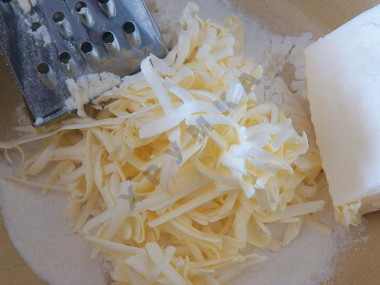
In a bowl with flour, grate cold butter and mix
Step 9:
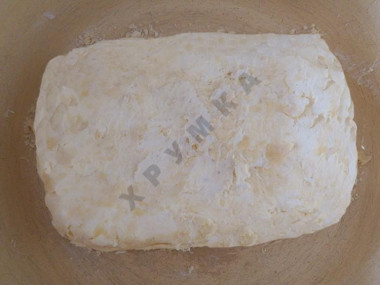
Sculpt a rectangular cake.
Step 10:
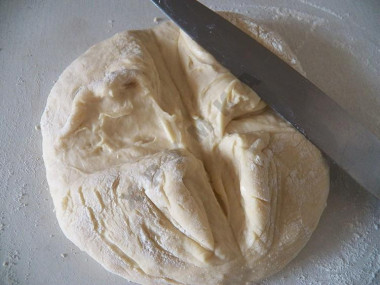
Cut the dough crosswise.
Step 11:
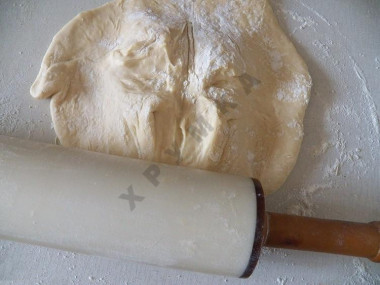
Add flour and roll out the dough with a rolling pin so that the middle of the layer is thicker than the edges.
Step 12:
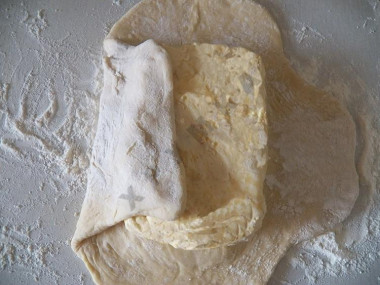
In the center of the layer, put a roll of oil, cover it with long edges of the dough and pinch the edges of the tortilla
Step 13:
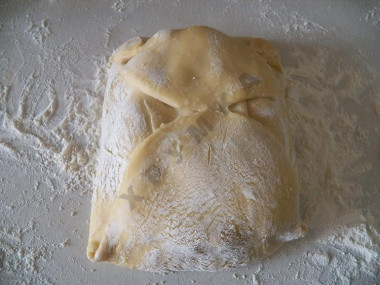
We get this "envelope", which we cover with a napkin and leave for 10 minutes in a cool place (not necessarily in the refrigerator)
Step 14:
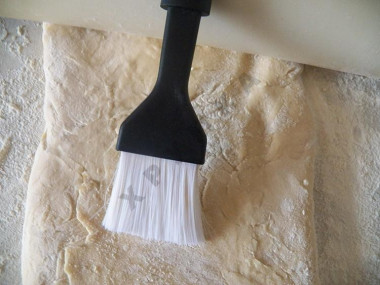
. The resulting “envelope", put on the table, dust with flour and
Step 15:
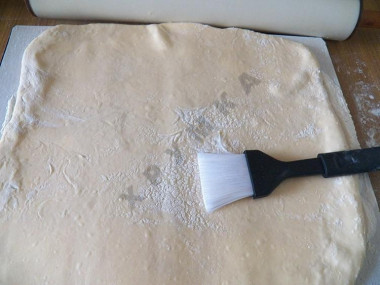
With a thick rolling pin, starting from the middle, roll out into a rectangular 10 mm layer, then with a soft brush sweep away excess flour from the surface of the layer
Step 16:
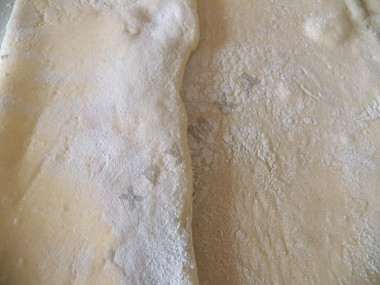
And fold
Step 17:
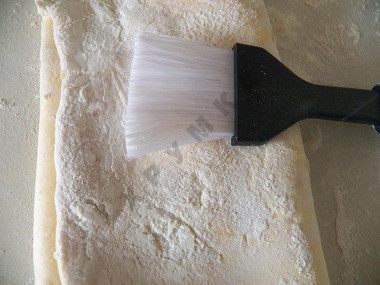
And fold in four
Step 18:

This is how the 4-layer seaming is formed. Cover the dough with a napkin and leave for 10 minutes,
Step 19:
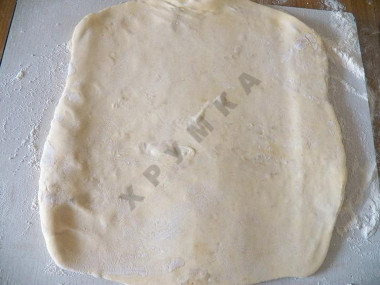
After that, the rolling is turned, sprinkled with flour on top and bottom and rolled out again to 10 mm thick.
Step 20:
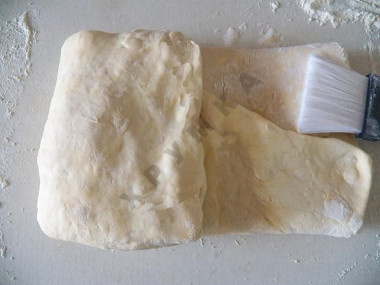
Sweep away the flour and fold the roll again in four,
Step 21:
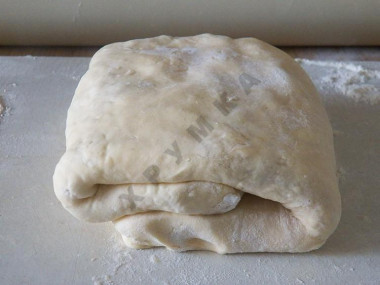
In which 16 layers of oil were formed. Cool the dough, roll it out again after 20 minutes and fold it in four, resulting in a dough with 64 layers of oil
Step 22:
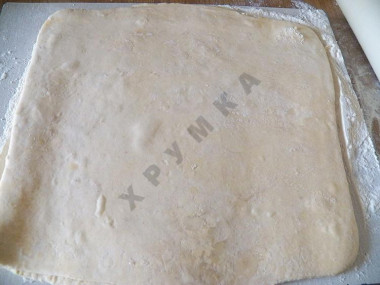
After 30 minutes of cooling, roll the dough into a layer and
Step 23:
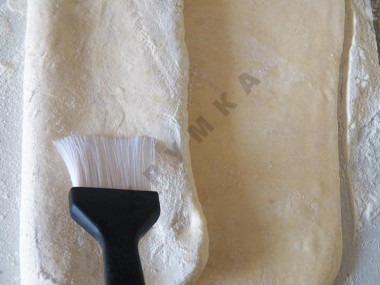
Fold in four again, while already receiving 256 layers of oil.
Step 24:
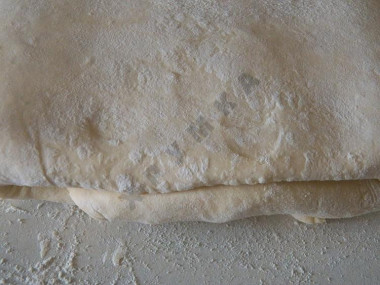
Further, the dough should not be laid out and folded, since thin layers can break, as a result of which the oil will mix with the dough and the products will turn out to be little layered.
Step 25:
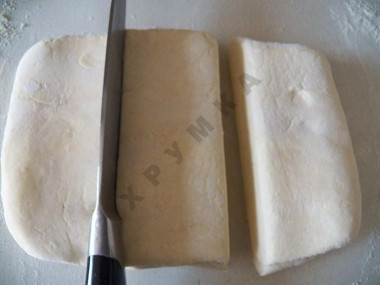
Divide the resulting dough into the parts we need
Step 26:
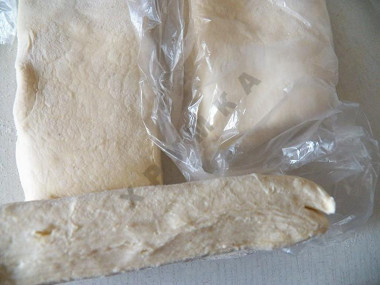
We put each part of the dough in a food-grade plastic bag.
Step 27:
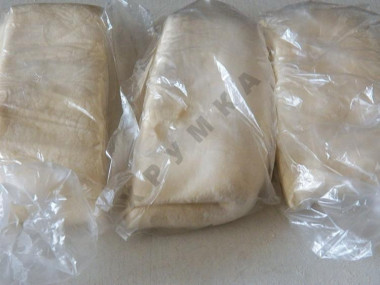
Put the dough in the freezer
The best temperature for kneading dough, preparing oil, inventory and the room where the dough is prepared is 15– 17C, at which the oil retains elasticity and there is no need to cool it, but between rolls you need to leave the dough alone for a while so that the layers do not break during further rolling.
Citric acid solution can be prepared by yourself: dissolve a spoonful of crystalline citric acid in two tablespoons of hot water and store in a glass bottle with a dropper.Citric acid can be replaced with vinegar at the rate of one teaspoon of 3% vinegar per 2 cups of flour.
Caloric content of the products possible in the composition of the dish
- Chicken egg - 157 kcal/100g
- Egg white - 45 kcal/100g
- Egg powder - 542 kcal/100g
- Egg yolk - 352 kcal/100g
- Ostrich egg - 118 kcal/100g
- Whole durum wheat flour fortified - 333 kcal/100g
- Whole durum wheat flour, universal - 364 kcal/100g
- Flour krupchatka - 348 kcal/100g
- Flour - 325 kcal/100g
- Table margarine - 720 kcal/100g
- Cream margarine - 720 kcal/100g
- Milk margarine - 743 kcal/100g
- Low-fat margarine - 384 kcal/100g
- Margarine sandwich - 688 kcal/100g
- Margarine for baking - 675 kcal/100g
- Margarine dietary - 366 kcal/100g
- Margarine bold 40 % - 415 kcal/100g
- Margarine - 720 kcal/100g
- Citric acid - 0 kcal/100g
- Salt - 0 kcal/100g
- Water - 0 kcal/100g

